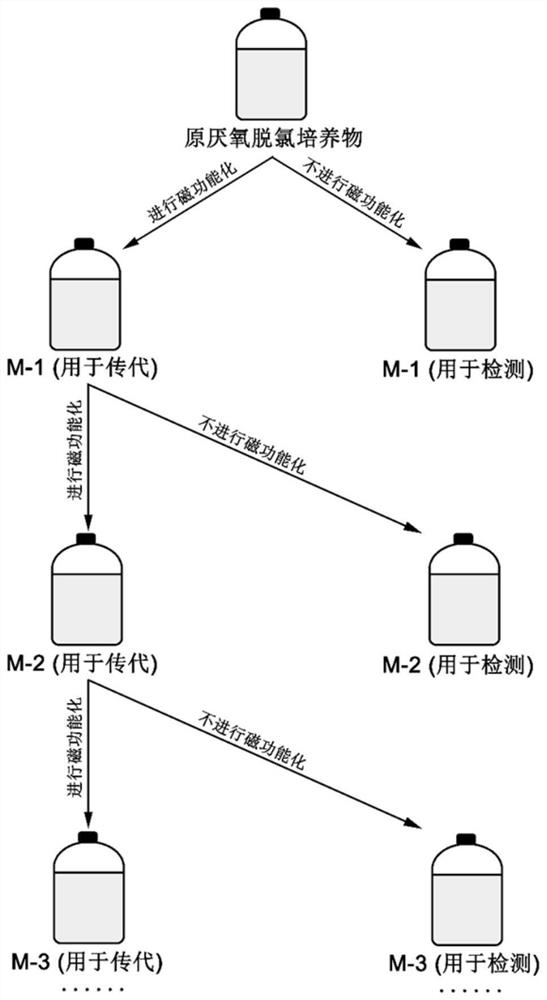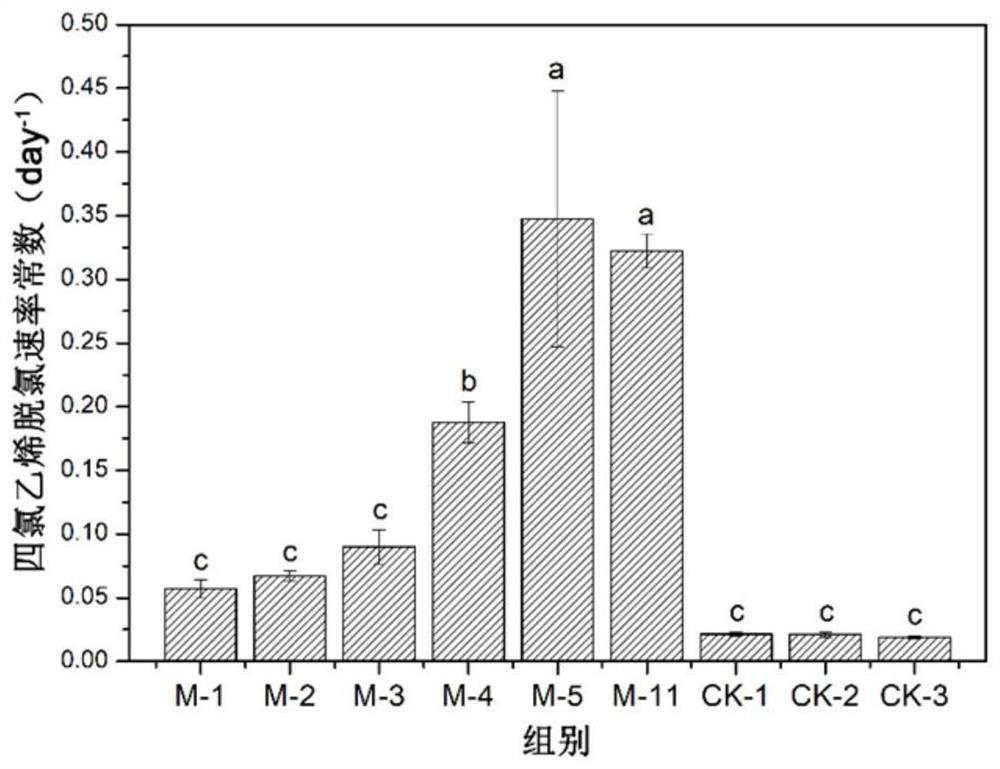Dechlorination enhancing method based on magnetic nanoparticles
A magnetic nanoparticle and dechlorination technology, applied in the field of environmental microbial engineering, can solve the problems of changing the basic properties and ecological functions of the soil, high repair costs, complex equipment and technology, etc., to achieve simple repair, increase dechlorination rate, and enhance dechlorination active effect
- Summary
- Abstract
- Description
- Claims
- Application Information
AI Technical Summary
Problems solved by technology
Method used
Image
Examples
Embodiment 1
[0067] In this embodiment, the original anaerobic dechlorination culture bacterial liquid identical to Comparative Example 1 is magnetically functionalized, and then the magnetically functionalized bacterial liquid is subcultured by the DEM method of the present invention, as follows:
[0068] 1. Experimental method
[0069] 1. Experimental steps such as figure 1 As shown, the details are as follows:
[0070] (1) The bacterial liquid containing anaerobic dechlorinating bacteria is magnetically functionalized using magnetic nanoparticles in an anaerobic environment. The method is as follows:
[0071] 1.1) The glass vial was aerated with 99.999% high-purity nitrogen for 2 min, sealed with a butyl rubber stopper and an aluminum cap, and then autoclaved at 121° C. for 20 min to obtain a sterile nitrogen vial.
[0072] 1.2) Use a syringe to extract the original anaerobic dechlorination culture bacteria solution and nano-magnetic particle solution into the sterile nitrogen vial in...
PUM
 Login to View More
Login to View More Abstract
Description
Claims
Application Information
 Login to View More
Login to View More - R&D
- Intellectual Property
- Life Sciences
- Materials
- Tech Scout
- Unparalleled Data Quality
- Higher Quality Content
- 60% Fewer Hallucinations
Browse by: Latest US Patents, China's latest patents, Technical Efficacy Thesaurus, Application Domain, Technology Topic, Popular Technical Reports.
© 2025 PatSnap. All rights reserved.Legal|Privacy policy|Modern Slavery Act Transparency Statement|Sitemap|About US| Contact US: help@patsnap.com


